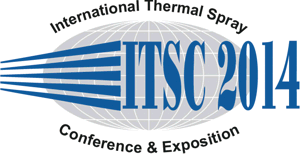
|
3658 |
|
Wednesday, May 21, 2014, Hall A 11:50 AM Plasma Spraying 1 |
|
Influence of welding HAZ stresses on
adhesion strength of APS ceramic coatings
|
|
John Barr* / Watson Coatings Laboratory, USA Christopher Estrada / Watson Laboratory, USA Bob White/ Watson Grinding & MFG, USA Jerome Harrison/ Watson Grinding & MFG, USA |
|
Abstract One of the advantages of Air Plasma Sprayed (APS) Thermal Spray Coatings (TSCs) is that a used expensive component (i.e. Titanium ball valve), can be: disassembled, re-machined, and recoated at a fraction (~1/3) of the cost of a new replacement. Occasionally a component will have experienced erosion damage that cannot be machined without rendering the component undersize. Rather than scrapping the component, a single/multi pass TIG overlay can be applied to re-establish required dimensions. The preconceived hypothesis is that: residual Heat Affected Zone (HAZ) solidification stresses will result in a measurable decrease in adhesion strength of the APS coating. The decrease in adhesion strength (if any) needs to be considered by the end user when long delivery for new parts justifies / mandates repairing the as received components. This study was performed to determine the influence of a matching composition TIG weld performed on a V groove across a 1in diameter, 0.5in length C633 coupon. After welding, the C633 buttons are ground and lapped parallel. A metal bond coat is HVOF applied, then 1 of 3 Ceramic coatings applied (Cr2O3, 75%Cr2O3-25%Al2O3, and TiO2). Base materials evaluated: Carpenter Alloy 20, Titanium Grade 12, and 31803 Duplex SS. The following samples will be evaluated for adhesion strength (ASTM C633): as machined (new) for reference, single pass TIG weld, multi pass (3) TIG weld, and multi pass 100% coverage TIG weld. All of the above samples will be duplicated and thermally cycled from ambient to ~200C simulating service temperature Coefficient of Expansion stresses. Representative samples were sectioned and metallographicaly polished (ASTM E1920) to observe the effect on: microstructure, document deleterious phases (if any), and enable Vickers hardness testing (ASTM E384). |